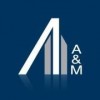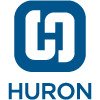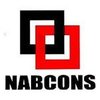Filter interviews by
Planedge Consultants Interview Questions and Answers
Planedge Consultants Interview Experiences
8 interviews found
(1 Question)
- Q1. What is Pert and cpm
- Ans.
PERT and CPM are project management techniques used to plan, schedule, and control projects.
PERT (Program Evaluation and Review Technique) is a probabilistic technique used to estimate the time required to complete a project.
CPM (Critical Path Method) is a deterministic technique used to identify the critical path in a project schedule.
PERT uses three time estimates (optimistic, pessimistic, and most likely) to calcula...
I appeared for an interview in Dec 2023.
(1 Question)
- Q1. What is the percentage of Fly ash or GGBS used in mix design
- Ans.
The percentage of Fly ash or GGBS used in mix design varies depending on the specific project requirements and standards.
The percentage of Fly ash or GGBS used in mix design can range from 10% to 50% depending on the desired strength and durability of the concrete.
Fly ash is commonly used as a partial replacement for cement in concrete mix designs, typically ranging from 15% to 30%.
GGBS (Ground Granulated Blast Furnace...
Interview Preparation Tips
I applied via Referral and was interviewed in Mar 2023. There were 3 interview rounds.
(1 Question)
- Q1. Technical question paper was given
(1 Question)
- Q1. How many peoples team you handled and how many projects you did.
- Ans.
I managed teams of up to 15 members and successfully completed over 10 diverse projects across various industries.
Led a team of 10 in a software development project that improved client satisfaction by 30%.
Oversaw a cross-functional team of 15 for a healthcare initiative, delivering results ahead of schedule.
Managed 5 projects simultaneously, ensuring all were completed within budget and time constraints.
Implemented Ag...
(1 Question)
- Q1. Don't give you hike because we had budget restrictions.
Interview Preparation Tips
I applied via Walk-in and was interviewed in Apr 2022. There were 5 interview rounds.

(2 Questions)
- Q1. What is your salary expectations?
- Ans.
I expect a salary that is competitive and reflective of my experience and skills.
Research the average salary range for architects in your area
Consider your level of experience and expertise
Factor in any additional qualifications or certifications you possess
Be prepared to negotiate and discuss benefits and perks as well
- Q2. How many years of experience do you have?
- Ans.
I have 10 years of experience in architecture.
I have been working as an architect for the past 10 years.
During my career, I have successfully completed numerous architectural projects.
I have experience in designing residential, commercial, and institutional buildings.
I am well-versed in architectural software and have a strong understanding of building codes and regulations.
I have collaborated with clients, engineers, ...
(1 Question)
- Q1. What are your strong point?
- Ans.
My strong points as an Architect include attention to detail, creativity, and strong problem-solving skills.
Attention to detail: I have a keen eye for detail and ensure that every aspect of a design is carefully considered.
Creativity: I am able to think outside the box and come up with innovative and unique design solutions.
Strong problem-solving skills: I am adept at identifying and resolving complex architectural cha...
(1 Question)
- Q1. Can you deliver drawings in timely basis with checking errors
- Ans.
Yes, I have a proven track record of delivering accurate drawings within deadlines.
I have experience using various software and tools to ensure accuracy and efficiency.
I always double-check my work to catch any errors before submitting.
I prioritize time management and organization to meet deadlines.
For example, in my previous job, I was able to deliver a set of complex drawings for a large-scale project within a tight ...
(3 Questions)
- Q1. What intrests you most in field of civil engineering
- Ans.
The opportunity to design and create structures that improve people's lives.
I am most interested in the ability to design and create structures that have a positive impact on society.
I find it fascinating to see how civil engineering projects can transform communities and improve the quality of life for people.
The challenge of finding innovative and sustainable solutions to complex engineering problems is also a major ...
- Q2. What is application of point load in structural system
- Ans.
Point load is a concentrated force applied to a single point on a structural system.
Point loads are used to simulate the effect of heavy objects or equipment on a structure.
They are commonly used in the design of beams, columns, and foundations.
Point loads can cause stress concentrations and should be carefully considered in the design process.
Examples of point loads include a heavy piece of machinery on a floor, a per...
- Q3. Write specification of excavation?
- Ans.
Excavation specification outlines the requirements for digging and removing soil or rock from a site.
Excavation depth and dimensions
Type of soil or rock to be excavated
Method of excavation (manual or mechanical)
Location of excavated material disposal
Safety measures for workers and surrounding structures
Environmental considerations
Backfilling and compaction requirements
Interview Preparation Tips
I applied via Walk-in and was interviewed in Jan 2022. There were 3 interview rounds.
Interview Questionnaire
3 Questions
- Q1. Technical and practical
- Q2. Concrete technology related
- Q3. Project related
Interview Preparation Tips
(1 Question)
- Q1. Target mean strength,AAC block volume, development length
(1 Question)
- Q1. Where are you from, previous company experience
Interview Preparation Tips
I applied via Walk-in and was interviewed in Dec 2020. There were 3 interview rounds.
Interview Questionnaire
2 Questions
- Q1. Construction activities step by step
- Q2. Slump test procedure with limit
- Ans.
The slump test is a procedure used to measure the consistency of fresh concrete.
The test involves filling a slump cone with concrete and then removing the cone to observe the slump of the concrete.
The slump is the difference in height between the height of the cone and the height of the concrete after the cone is removed.
The slump test is used to determine the workability of the concrete, which is important for proper ...
Interview Preparation Tips
I appeared for an interview before Dec 2020.
Interview Questionnaire
1 Question
- Q1. Risk Assessment
Interview Preparation Tips
Top trending discussions






Interview questions from similar companies

I applied via Campus Placement and was interviewed before May 2020. There were 3 interview rounds.
Interview Questionnaire
4 Questions
- Q1. Case study on telecom industry in Bangladesh
- Q2. How would you do a competitor analysis?
- Ans.
Competitor analysis involves identifying and evaluating the strengths and weaknesses of competitors.
Identify competitors in the market
Gather information on their products/services, pricing, marketing strategies, and target audience
Analyze their strengths and weaknesses
Compare their offerings to your own
Identify opportunities and threats in the market
Use SWOT analysis to summarize findings
- Q3. Technical questions around ANOVA, MANOVA, hypothesis testing, p-value, Variance inflation factor, regression analysis, classification
- Q4. Why do you want to join A&M?
Interview Preparation Tips

I applied via Naukri.com and was interviewed before Sep 2020. There were 4 interview rounds.
Interview Questionnaire
2 Questions
- Q1. What is the recent project you executed?
- Q2. An assignment and related questions
Interview Preparation Tips
Planedge Consultants Interview FAQs
Tell us how to improve this page.
Planedge Consultants Interviews By Designations
- Planedge Consultants Planning Engineer Interview Questions
- Planedge Consultants Project Manager Interview Questions
- Planedge Consultants Safety Officer Interview Questions
- Planedge Consultants Junior Engineer Civil Interview Questions
- Planedge Consultants Civil Engineer and Site Engineer Interview Questions
- Planedge Consultants Quality Engineer Interview Questions
- Planedge Consultants Architect Interview Questions
- Planedge Consultants Site Engineer Interview Questions
- Show more
Interview Questions for Popular Designations
Overall Interview Experience Rating
based on 4 interview experiences
Difficulty level
Duration
Interview Questions from Similar Companies
Planedge Consultants Reviews and Ratings
based on 94 reviews
Rating in categories
|
Senior Engineer
47
salaries
| ₹4.2 L/yr - ₹7.8 L/yr |
|
Junior Engineer
36
salaries
| ₹2.2 L/yr - ₹4.8 L/yr |
|
Project Manager
26
salaries
| ₹8.1 L/yr - ₹12.5 L/yr |
|
Junior Engineer Civil
22
salaries
| ₹2.2 L/yr - ₹4.8 L/yr |
|
Estimation Engineer
21
salaries
| ₹2.7 L/yr - ₹6 L/yr |

McKinsey & Company

Protiviti India Member

Valueonshore Advisors

Thinksynq Solutions
- Home >
- Interviews >
- Planedge Consultants Interview Questions













